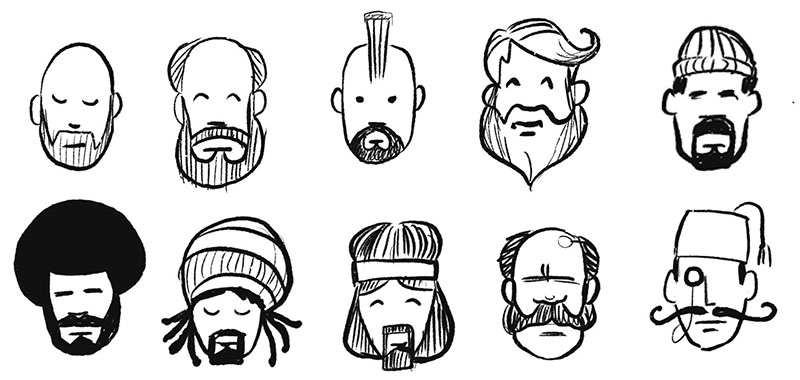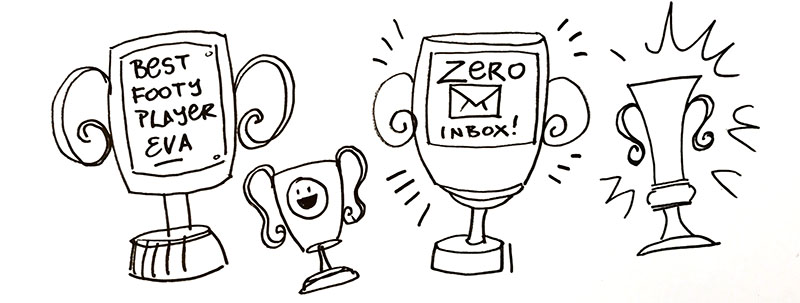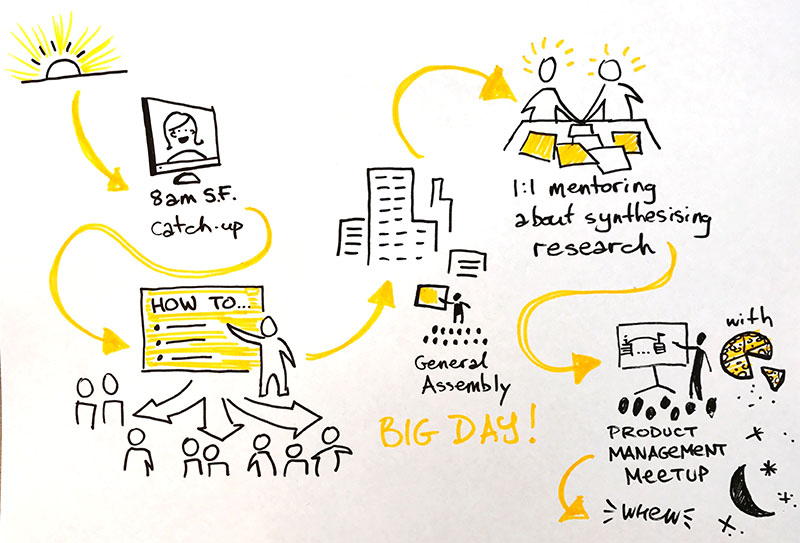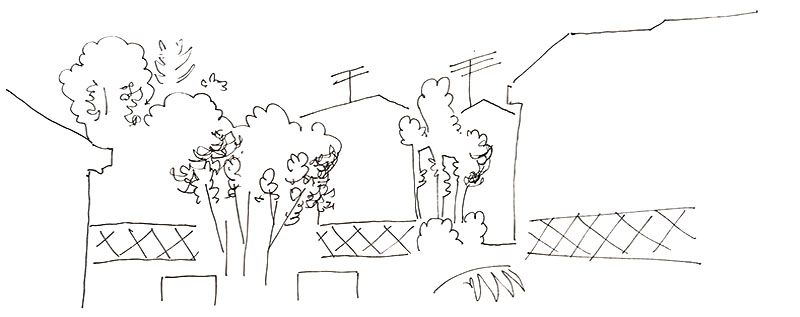Whether you draw for a living, or you just want to increase engagement in your work by making it more visual (or both!) adding figures and faces to your communications makes a big impact. Our eyes can’t help but lock into the eyes of another face, or the pose of a figure, to seek meaning and affinity.
As well as adding figures, we can also pay attention to enriching those figures with more character and meaning, to boost the impact of your communication:
- Are you communicating a plan or strategy to the organisation? Add figures to show where and how different teams ‘fit into the picture’.
- Do you want to highlight a particular product/service problem to stakeholders? Show people being impacted by that problem.
- Do you want to sell a benefit of a new product or process? Show people being happy when they use it.
Good news: you can draw more interesting figures and faces yourself, and it’s easier than you think. We’re not aiming for anatomically correct works of art here; we’re just aiming for the essence of a figure, or an expression. In this post, I’m going to focus on figures, and show you 3 secrets to drawing more impactful figures.
1. Draw the body language
Most of what we communicate to each other is non-verbal, and a big part of that is through body language. This differs depending on context, but essentially: what we say with our bodies matters. So, the poses of the figures you draw matters, too!
Compare the pairs of figures below. Even though they’re really simple, the second figure of each pair communicates a lot more, doesn’t it? Your figures will have more character and appear more real (no matter how simple they are), which makes your message much more compelling to your viewers.
2. Draw people in their natural habitat
Think about where your figure is, and what they’re doing. People rarely just stand bolt upright not doing anything; showing them moving around, slouching, sitting, lying down, or doing various things adds so much more vitality. Add a hint of an accessory or something to add a bit more interest, too. When you use your imagination in your sketching, you’ll ignite your viewers’ imaginations, which will make your message more memorable.
3. Dial up the drama
Use a trick that cartoonists know really well, and try exaggerating the poses of your figures. This works really well when you want to cut through the noise of other communications, and imply drama and urgency.
Your turn
My challenge to you: if you’ve never included your sketches in a presentation or on a whiteboard, try it out, and let me know how it goes! You’ll be pleasantly surprised by the positive attention it gets. And if you’re pretty seasoned at drawing figures at work, then think about how you can add more body language, habitat and drama, for added impact.
Have fun with it!
















